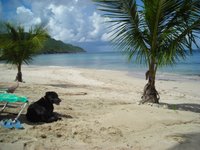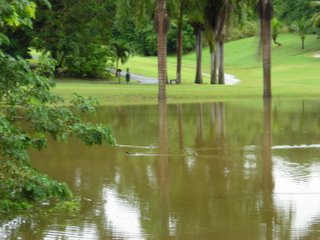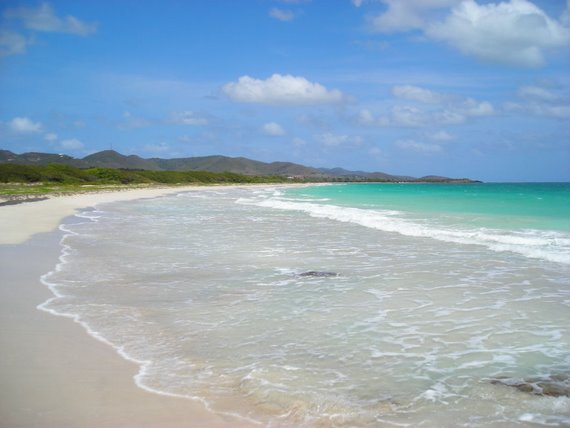 What is life really like on a tropical isle? Azure beaches, palm trees, sun, sand and surf…the consummate daydream.
What is life really like on a tropical isle? Azure beaches, palm trees, sun, sand and surf…the consummate daydream.A scant month ago, I gained the opportunity to live that dream.
An occupational transfer prompted our relocation from urban America to an island in the Caribbean. My husband and I, dog, Chuck, and cat, Gus, moved from the heart of Washington, DC to St. Croix, twice the land mass of the District of Columbia and a little more than one-tenth the population.
Welcome, to a new continental’s (a common reference to state-siders) perspective on life in “America’s Paradise.”
St. Croix is the largest of the U.S. Virgin Islands with two main towns: Christiansted on the northeast and Fredericksted on the west coast. Farther south than the other Virgin Islands, (U.S. and British) St. Croix lies about two-thirds of the way down the archipelago. The chain of islands begins with the Bahamas at the north and ends with Trinidad at the south, just off the coast of Venezuela.
Before moving to St. Croix, I visited neither the Caribbean nor any other island destination and, thus, have no frame of reference for comparison. We consulted guide books and questioned friends and family about experiences in the Caribbean.
I learned the following observations (with more to come) do not apply to St. Croix.
Overrun with cruise ships and tourists
St. Croix, known as the “Quiet Virgin” fulfils that moniker when it comes to tourists. I have been to the beach when we were the only swimmers for a mile of sandy shore. Yes, certain areas of the island are busy and traffic jams do occur, but only in the commercial, day-to-day business sectors of the island that would never be destination spots for visitors.
Accosted by people pushing you into shops
The pushy shop people are known as “barkers” and illegal in St. Croix. The profession is legal on St. Thomas and originated to encourage tourists to leave the main street and visit shops in side-streets and alleys.
Accosted by hair braiders
I haven’t had one person even attempt to braid my hair. I haven’t notice an extraordinary amount of braided hair among locals. This must be some other Caribbean island’s hallmark or just a ruse to take tourist’s money. I did however get a dynamite haircut (one of the best I’ve ever had) from Trinidadian-born Petal of Petal’s Beauty Studio.
Besides a great stylist (which as you know ladies is no small feat), I’ve found a beautiful, rich, diverse new temporary home. The flora and fauna (photos and descriptions upcoming) continue to amaze. With some frequency, heavy rainstorms gather, descend, abruptly dissipate and the power goes out--like right now (thank goodness for batteries).
The pace of life is slower, but then one is forced to relax. My intention is to make the most of this sojourn.













